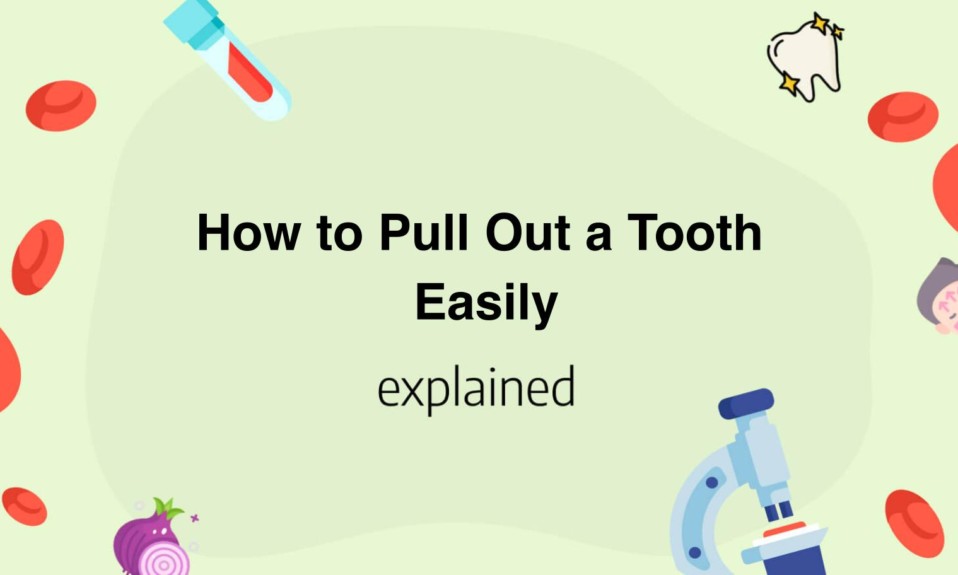If you have an unbearable toothache, pulling out the tooth might seem like the only solution left.
Although it can sound terrifying, learning how to pull out a tooth easily can help you relieve the pain and discomfort quickly.
Whether it’s a loose baby tooth or a stubborn adult tooth, understanding the right technique and tools needed for the job is essential for a successful extraction.
In this article, we’ll provide some expert tips and tricks to make pulling out a tooth a breeze.
- Apply a warm compress to the affected area to alleviate pain and swelling.
- Wiggle the tooth gently from side to side with clean fingers until it begins to loosen.
- Use sterilized pliers or tweezers to grip the tooth firmly and pull it out in one swift motion.
- Bite down on a clean piece of gauze to stop any bleeding and reduce discomfort.
- Rinse your mouth with warm saltwater to disinfect the wound and promote healing.
Benefits of pulling out a tooth at home
Removing a tooth at home might seem like a daunting task, but there are actually several benefits to doing so.
Firstly, it can save you a trip to the dentist, which can be expensive and time-consuming.
It also allows you to take control of your own healthcare, which can be empowering.
Secondly, pulling out a tooth at home can be done quickly and easily, even if you don’t have access to dental tools.
You can simply use your fingers or a pair of pliers to do the job.
However, it’s important to note that this should only be done in emergency situations and not as a regular practice.
Another benefit of removing a tooth at home is that it can provide immediate relief from pain and discomfort.
If you have a toothache or an infected tooth, pulling it out can alleviate the pain and prevent the infection from spreading.
However, it’s important to take proper precautions to ensure that the area stays clean and free from infection.
For example, you can rinse your mouth with saltwater and apply a cold compress to the outside of your cheek to reduce swelling.
One of the main benefits of removing a tooth at home is that it can save you money.
Dental procedures can be expensive, and pulling a tooth at home can be a cost-effective alternative.
However, it’s important to keep in mind that removing a tooth at home carries risks, such as bleeding, infection, and damage to the surrounding teeth and gums.
Therefore, it’s important to exercise caution and seek professional help if necessary.
In conclusion, pulling out a tooth at home can have several benefits, including saving time and money, providing immediate relief from pain and discomfort, and empowering individuals to take control of their own healthcare.
However, it should only be done in emergency situations and with proper precautions to minimize risks.
If you experience severe pain, bleeding, or other complications, it’s important to seek professional help.
Best time to pull out a tooth
The best time to pull out a tooth depends on several factors.
If the tooth is infected or causing a lot of pain, it may need to be extracted as soon as possible.
In other cases, it may be best to wait until the tooth has fully erupted and is no longer developing.
The timing of tooth extraction can also affect the healing process and outcome.
If the tooth is extracted before it is fully formed, it may be more difficult to remove because the roots are not fully developed.
This can increase the risk of complications such as nerve damage or infection.
It is generally recommended that wisdom teeth be extracted in the late teenage years or early twenties before they have fully formed and caused any problems.
Another consideration is the patient’s overall health.
If a patient has a weakened immune system due to a medical condition or medication, it may be necessary to delay tooth extraction until the patient’s health improves.
In some cases, antibiotics may be prescribed before or after the procedure to reduce the risk of infection.
The time of day can also play a role in tooth extraction.
It is generally recommended to schedule extractions in the morning, when the patient is well-rested and before any meals have been eaten.
This can minimize the risk of complications such as nausea or vomiting during the procedure.
It is also important to follow the dentist’s instructions for aftercare, which may include avoiding hard or sticky foods, using pain medication, and keeping the extraction site clean.
In summary, the best time to pull out a tooth depends on the individual circumstances of the patient.
Factors such as the development of the tooth, the patient’s overall health, and the time of day can all play a role in the decision.
It is important to consult with a dentist or oral surgeon to determine the best course of action and to follow their instructions for aftercare.
Preparing for a successful tooth extraction
Before undergoing tooth extraction, it is important to take certain precautions to ensure a successful recovery.
Firstly, it is recommended not to consume any solid or hot food at least two hours prior to the extraction.
Additionally, inform your dentist about any medications you are currently taking prior to the procedure.
In order to minimize bleeding and swelling after extraction, bite down on a gauze pad placed over the extraction site for about 30-45 minutes post-surgery.
Using an ice pack on the affected area for 20 minutes at a time can also significantly reduce swelling.
It’s important to avoid smoking and drinking through a straw for at least 24 hours after extraction, as these actions can potentially dislodge the blood clot that forms on the extraction site and delay healing.
It’s perfectly normal to experience some pain and discomfort after extraction but proper after-care can minimize it.
Over-the-counter pain medication can be taken to alleviate pain during the healing process.
Additionally, be sure to follow proper oral hygiene practices to prevent infection.
Brush gently near the extraction site and avoid rigorous rinsing for the first 24 hours.
Rinse your mouth with salt water several times a day for the first few days after extraction.
Take a couple of days off from work or vigorous activities to rest and speed up the healing process.
Remember, post-operative care can greatly affect the overall success of your procedure.
By following these tips, you can help ensure a successful and smooth tooth extraction experience.
Read also: Is a Sinus Infection Contagious?
Tools needed for pulling out a tooth
The tools needed for pulling out a tooth are essential to have on hand for anyone attempting an extraction.
The main tools that are required include a pair of dental forceps, a dental elevator, and anesthesia.
Dental forceps are used to grasp the tooth and apply pressure to the roots for it to be pulled out.
Elevators are used to loosen the tooth from the gums so it can be extracted more easily.
Anesthesia is also necessary to numb the tooth and surrounding area to avoid pain and discomfort during the extraction process.
In addition to these main tools, other items that can be helpful include gauze pads, a mirror, and a bright light to help with visibility.
It is important to note that pulling out a tooth without the proper tools and experience can be dangerous and even lead to infection.
Therefore, it is recommended to visit a dental professional to perform the extraction.
Avoid attempting to extract the tooth yourself unless necessary, and always sterilize any tools that may come in contact with the tooth or surrounding area.
In conclusion, the main tools needed for pulling out a tooth include dental forceps, a dental elevator, and anesthesia.
Additional helpful items can include gauze pads, a mirror, and a bright light.
If attempting an extraction at home, always ensure you have the necessary tools and experience, and if in doubt, consult a dental professional.
Remember to sterilize any tools and avoid unnecessary pain and discomfort.
Read also: How to Fix Buck Teeth Easily
Step-by-step guide for pulling out a tooth
First, wash your hands and the area around the tooth to avoid any potential infections.
Secondly, numb the area around the tooth to minimize the pain.
To do this, apply a topical anesthetic gel or spray on the gum or use ice packs on the outside of the mouth.
Use a sterilized pair of tweezers to gently grip the tooth in question.
Avoid using excessive force as this may cause the tooth to break.
With slow and firm pressure, rock the tooth back and forth, finally pulling it out in a slow and steady motion.
Once the tooth is out, apply gauze to the wound and bite down firmly to promote clotting and reduce bleeding.
Hold the gauze for about 30 minutes.
Additionally, a cold compress can also be placed on the outside of the mouth to reduce swelling.
If the bleeding continues, it’s important to seek dental assistance immediately.
However, if the bleeding stops, rinse the area with warm salt water to minimize bacteria growth and speed up the healing process.
It’s also important to note that it may take time for the surrounding gum tissue to heal completely following tooth extraction.
Therefore, it’s essential to avoid hard foods, smoking, and excessive alcohol consumption for at least 24 hours after the extraction.
In conclusion, tooth extraction can be a sensitive and uncomfortable process, but by following the above steps, it can be done with little to no complications.
A professional dental checkup prior to the extraction can give you more insight into what to expect and the best options available.
It’s also important that you maintain good oral hygiene after the extraction to avoid any infections or complications in the future.
You’ll also like:









